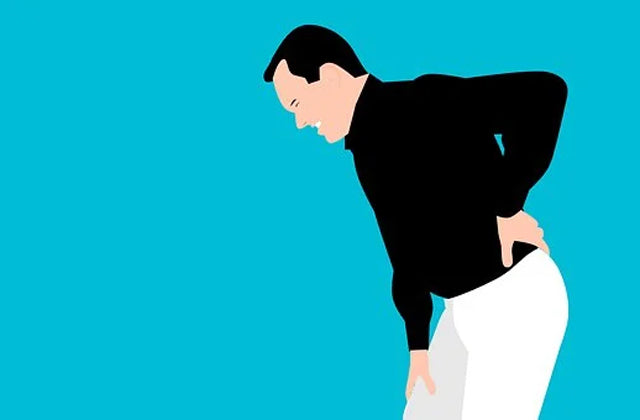
Millions of people develop back pain from sitting at desks for prolonged periods. Over time, incorrect sitting posture can damage spinal structures and can worsen the pain.
Having proper posture along with an ergonomically correct desk setup is essential to avoid back pain occurring.
The Basics of the Back
The back consists of many muscles, but also the spinal column, which contains discs.
- These discs are made up of water and chemicals called glycosaminoglycans that are resistant to compressive forces.
- Sitting compresses the discs, and sitting for long periods pushes the water out of the discs. When this occurs, the discs bulge outward, causing pressure on the spinal nerves, leading to radiating pain down the legs, referred to as sciatic nerve pain.
- Back pain can have many symptoms, including a dull ache or a shooting and burning sensation.
You can avoid back pain from sitting at a desk by making sure the workspace is adjusted correctly and rectifying any postural defects when seated.

Adjusting the Workspace
How you sit is critical when it comes to the prevention of back pain. Sitting in a hunched-over position can strain the spinal discs, but it can also overstretch the ligaments that support the spinal column.
The following steps are vital in the ergonomic desk setup process:
- The first step in adjusting the workspace is to ensure the computer monitor is placed at eye level.
- Whether it is up or down, the head’s slightest tilt will strain the muscles surrounding the neck and upper back areas.
- Having the head and neck in a neutral position helps reduce excess strain on the adjacent muscles and ligaments of the head and neck.
- Make sure to position the mouse and keyboard within easy reach.
- If the keyboard or mouse is too far away, you end up leaning forward or sideways to reach them, putting unnecessary strain on the back muscles that could leave you sitting at a desk with back pain.
- The keyboard should always be close enough to you to improve the shoulder and arm positioning.
-
Adjust the seating to support the back.
- The lower back has the same lordotic curve that the neck area has, shaped like a “C,” and if there is not enough low back support to maintain that curve, the muscles and ligaments surrounding that area become strained.
- If more lumbar support is needed, you can use a small pillow or roll up a towel and fold it over, creating a cylinder shape and placing it between the low back area and the chair, which will provide the necessary added support.
The proper positioning of the workspace is vital to help prevent back pain when sitting at a desk, but having the correct posture while sitting is also necessary.

Proper Sitting Posture
Besides being at eye level with the computer screen, the body’s remaining parts also need to be correctly formed.
- Elbows - The elbows should always be at a 90-degree angle.
-
Upper Legs - You should be able to easily slide your fingers underneath your upper legs at the edge of the chair while sitting.
- If it is too tight, get an adjustable footrest to prop the feet up.
- If there is too much space between the thigh and the chair, the desk and chair should be raised.
-
Lower Legs - For a complete ergonomic desk set up, you should be able to place a closed fist between the back of the calf and the front of the chair while sitting.
- If you can’t do this, the chair position is too deep
- This problem can be fixed by either moving the backrest forward, putting in a lumbar support device such as a small pillow or rolled-up towel, or getting a new chair.
Practicing good posture will help maintain the natural curves of the back and keep it strong and healthy.
Don’t Let Back Pain Keep You Sitting Down!
Having the proper workspace and posture can help prevent back pain when sitting at a desk, but it is also essential to take frequent activity breaks throughout the day.
- Set a timer at your desk, and every 30 minutes, get up and move around.
- When you get up and move around to stretch and walk, it can help prevent muscles from cramping, and it also prevents joints from getting stiff.
We can do many things to care for our backs, including back strengthening exercises and making sure our desk set up is ergonomically correct. By taking the necessary steps, we can help prevent any future occurrence of back pain when sitting at a desk. You may also have recurring back pain that you are taking medication for — stop! Consider the SOLIS pain relief device instead. Buy it here or contact us for more information.
